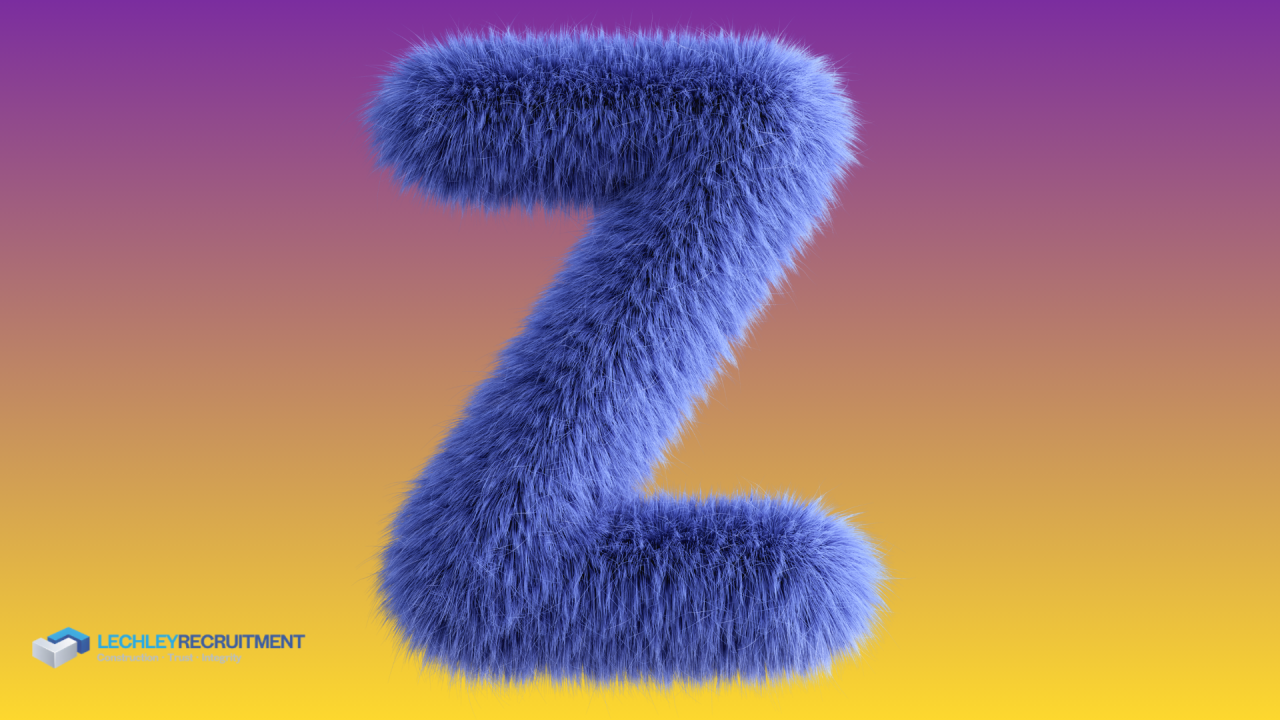Blog Post & Insights
Explore Expert Insights and the Latest Trends in Construction & Recruitment with our Curated Blog Posts

I'm incredibly proud to share our new strategic guide: For too long, the construction industry has faced a significant gap in diversity. We all know that good intentions and diversity statements aren't enough to create meaningful change. It's time to move beyond words and take real, measurable action to dismantle the systemic barriers that hold talented people back. This document serves as our idea for achieving just that. It outlines a practical, actionable strategy for building a more inclusive and thriving construction industry, one where capability is always met with opportunity, regardless of gender. We believe that fostering diversity isn't just the right thing to do; it's a decisive business advantage that drives innovation, improves safety, and boosts financial performance. Our strategy is built on four core pillars: Re-engineering the Pipeline (Recruitment): We Must Transform How We Attract Talent. This means implementing bias-free hiring processes, such as blind CV reviews, crafting inclusive job descriptions, and forging new partnerships with community organisations to find untapped talent. Overhauling the On-site Culture (Retention). This is the most challenging, yet critical, part. We must establish non-negotiable standards, including zero-tolerance policies for harassment, providing correctly fitting PPE for women, and creating psychologically safe environments where every voice is heard and valued. Creating Pathways for Growth (Advancement) Opportunity is about building a career, not just having a job. The commitment to creating transparent and unbiased promotion tracks, providing targeted leadership training, and implementing formal sponsorship programmes where senior leaders actively champion women's advancement. Accountability From the Top (Leadership) None of this works without genuine leadership buy-in. Change must be driven from the top by setting public, measurable DEI goals and making progress a key performance indicator (KPI) for senior managers, directly linking it to their performance reviews and compensation. I'm attaching the whole document below for you to read and share. Let's start a conversation about how we can work together to build a better, stronger, and more inclusive future for the UK construction industry. What are your thoughts on creating sustainable change? #WomenInConstruction #UKConstruction #DiversityAndInclusion #Leadership #DEI #BreakingBarriers #FutureOfConstruction

The Bricks and Mortar of Discontent: Unravelling the UK's Housing Crisis "The UK’s listed housebuilders are on track to build the fewest new homes for sale in a decade, as planning rules and high mortgage rates hold the market back despite the new Labour government’s push to increase housing supply." (Construction sector, UK’s Listed Builders on Track to Build Fewest New Houses in a Decade) The UK faces a persistent and complex housing crisis. While successive governments have pledged to increase housing supply, the reality consistently falls short of ambition. The opening statement, "The UK’s listed housebuilders are on track to build the fewest new homes for sale in a decade, as planning rules and high mortgage rates hold the market back despite the new Labour government’s push to increase housing supply," encapsulates the multifaceted nature of this challenge. It highlights the critical interplay of planning regulations, economic factors, and governmental policy, all contributing to a slowdown in housebuilding. This essay will delve into these interconnected issues, exploring the complexities of the UK’s housing market and the obstacles hindering the construction of much-needed homes. One of the most significant constraints on housebuilding is the intricate and often cumbersome planning system. Obtaining planning permission can be lengthy and arduous, fraught with bureaucratic hurdles and local opposition. Developers often face significant delays, adding to costs and discouraging investment. This bottleneck in the planning system acts as a substantial impediment to increasing housing supply, regardless of government initiatives. Under pressure from residents concerned about overdevelopment and the impact on local infrastructure, local authorities often resist new housing projects. This "NIMBYism" (Not In My Back Yard) creates a significant obstacle, even when central government pushes for increased building targets. The result is a system where local concerns and bureaucratic red tape often thwart good intentions. Coupled with planning constraints, economic factors play a crucial role in shaping the housing market. High mortgage rates, as highlighted in the opening statement, significantly impact affordability and dampen demand. When borrowing becomes more expensive, potential homebuyers are less able to secure mortgages, reducing the number of people actively looking to purchase property. This, in turn, discourages developers from building new homes as the demand for their products decreases. Furthermore, economic uncertainty, such as that caused by inflation or recessionary fears, can further exacerbate the problem. Developers become more cautious and hesitant to invest in new projects with an uncertain economic outlook. This creates a vicious cycle, where high mortgage rates and economic instability lead to reduced demand and decreased housebuilding, ultimately contributing to the housing shortage. The role of government policy is also pivotal, albeit often paradoxical. While the current Labour government has strongly committed to increasing housing supply, as noted in the opening statement, translating this ambition into concrete results is proving challenging. As highlighted in the context of the Labour government’s housebuilding ambitions, the reliance on migrant workers to address the skills gap within the construction sector underscores the difficulty of achieving targets without a robust domestic workforce. This raises questions about the long-term sustainability of such an approach and the need for investment in training and skills development within the UK. The government's aim to ignite a "housebuilding boom" is laudable, but achieving it requires more than just political will. It necessitates a comprehensive strategy that addresses the underlying issues of planning constraints, economic factors, and skills shortages. The skills deficit within the construction industry presents another significant hurdle. The urgent need for 250,000 new workers to meet current project demands and an additional 159,000 to hit government targets, as highlighted in one document, illustrates the scale of the problem. The slow pace of training new workers under current models makes it difficult to bridge this gap. Without a sufficient workforce, construction projects will be delayed or even abandoned even if planning permission is granted and mortgage rates are favourable. This skills shortage acts as a bottleneck, restricting the industry's capacity to deliver the required number of homes. The government's initiatives to address this issue, such as the planned 5,000 new apprenticeships, are a step in the right direction. Still, more comprehensive reforms are needed to create a sustainable pipeline of skilled workers. The gap between policy ambitions and practical constraints is a recurring theme. The expectation that the housing sector will build significantly less than needed to meet Labour’s aim of 1.5 million homes over five years highlights this disconnect. It underscores the fact that simply setting ambitious targets is not enough. Achieving these targets requires a concerted effort to address the systemic challenges hindering housebuilding. This includes streamlining the planning process, creating a more stable economic environment, and investing in skills training to ensure a sufficient workforce. Without addressing these fundamental issues, government targets risk remaining just aspirations. Furthermore, the construction industry's challenges extend beyond housebuilding to infrastructure projects. As mentioned in one highlight, the anticipated increase in infrastructure delivery post-2024 faces similar constraints. The capacity to bring these projects to fruition is hampered by the economic and structural challenges affecting housebuilding. This interconnectedness between housing and infrastructure highlights the need for a holistic approach to addressing the construction sector's challenges. A piecemeal approach, focusing solely on housing or infrastructure in isolation, is unlikely to be effective. In conclusion, the UK’s housing crisis is a complex issue with no easy solutions. The interplay of planning regulations, economic factors, skills shortages, and government policy creates a challenging environment for housebuilders. While the government's stated aim of increasing housing supply is commendable, achieving this goal requires more than just setting targets. It necessitates a fundamental planning system reform, a focus on creating a stable economic environment conducive to investment, and a commitment to developing a skilled workforce within the construction industry. Until these underlying issues are addressed, the UK will continue grappling with a housing crisis with far-reaching social and economic consequences. The bricks and mortar of new homes are not just physical structures; they represent opportunity, security, and the foundation for a thriving society. Unlocking the potential of the housing market requires a concerted and coordinated effort from all stakeholders, ensuring that the ambition to build a better future is not just a dream but a tangible reality.

The construction industry is facing a significant challenge due to an ageing workforce. As many baby boomers approach retirement age, there is a growing need to replace their expertise and experience with a new generation of workers[9]. However, retaining these older workers within the industry can bring numerous benefits, particularly in passing on their knowledge and skills to the younger generation. Experience and Knowledge Transfer Older workers bring a wealth of experience and knowledge that can be invaluable to younger workers. They have a deep understanding of the industry, having navigated its complexities for many years. This experience can be passed on through mentorship programs, where experienced workers coach younger ones[3][4]. This not only helps to bridge the generational gap but also ensures that valuable skills and knowledge are not lost when older workers retire[1][10]. Consistency and Quality of Work Due to their years of experience, older workers often produce more consistent and high-quality work. They have proven track records of success, which can be a valuable asset to any construction company[1][10]. By retaining these workers, companies can ensure that their high standards of work are maintained and passed on to the next generation. Networking and Contacts Older workers often have a strong network of industry contacts that they can bring to their roles. These contacts can be invaluable in the construction industry, where relationships and networking are key to securing contracts and projects[1]. Economic Benefits Retaining older workers can also bring significant economic benefits. Knowledge transfer can immediately enhance a number of the performance parameters now utilised by the construction industry, such as cost, time, and safety[5]. Moreover, older workers tend to stay in jobs longer and take fewer days off, which can lead to increased productivity and reduced turnover costs[13]. Bridging the Skills Gap The construction industry is currently facing a 'skills gap', with a significant number of workers set to retire within the next few years[1]. By retaining older workers and leveraging their knowledge and skills, companies can help to bridge this gap and ensure a smooth transition for the industry. Conclusion In conclusion, retaining retired workers within the construction industry can bring numerous benefits, particularly in terms of passing on their knowledge and skills to the younger generation. It can help to bridge the skills gap, maintain high standards of work, and bring economic benefits. Therefore, it is crucial for the industry to value and respect older workers and the wealth of experience they bring to the table. Sources Sources [1] 10 Benefits that Older Workers Bring to the Construction Industry | GoContractor https://gocontractor.com/blog/benefits-older-workers-construction/ [2] Knowledge Transfer in a Project-Based Organization Through ... https://journals.sagepub.com/doi/full/10.1177/00218863211033096 [3] Reverse mentorships bridge generational gaps https://www.constructiondive.com/news/reverse-mentor-construction-technology-genz/698337/ [4] How to Create a Knowledge Transfer Strategy for Retiring Workers https://www.linkedin.com/pulse/how-create-knowledge-transfer-strategy-retiring-workers [5] https://epress.lib.uts.edu.au/journals/index.php/AJCEB/article/download/8050/8003 [6] Multigenerational Leadership in Construction | FORVIS https://www.forvis.com/forsights/2022/06/multigenerational-leadership-in-construction [7] Contractor uses AI to capture knowledge of retiring engineers https://blog.alicetechnologies.com/news/contractor-uses-ai-to-capture-knowledge-of-retiring-engineers [8] A novel framework of knowledge transfer system for construction ... https://www.sciencedirect.com/science/article/abs/pii/S0957417422003906 [9] The aging workforce in construction will bring a lot of challenges to the sector here is what we can do to mitigate any risks. https://www.linkedin.com/pulse/aging-workforce-construction-bring-lot-challenges-sector-alex-herman [10] 5 Reasons to Hire Older Workers — and 1 Thing to Avoid Doing https://kimmel.com/employers/embrace-gray-power-5-reasons-to-hire-older-workers-and-1-thing-to-avoid-doing [11] Knowledge Transfer Characteristics of Construction Workers Based on Social Network Analysis https://www.mdpi.com/2075-5309/12/11/1876 [12] Mentoring Millennials https://hbr.org/2010/05/mentoring-millennials [13] The Advantages of Older Workers https://www.publichealth.columbia.edu/research/others/age-smart-employer/resources/guides/advantages-older-workers [14] How Knowledge Transfer Impacts Performance - jstor https://www.jstor.org/stable/23362025 [15] Mentorship in Construction: Why and How | GoCodes https://gocodes.com/mentorship-in-construction/ [16] Preventing Brain Drain: Preserving retirees' institutional knowledge ... https://www.ecmag.com/magazine/articles/article-detail/your-business-preventing-brain-drain-preserving-retirees-institutional-knowledge-and [17] (PDF) EFFECTIVE KNOWLEDGE TRANSFER IN CONSTRUCTION https://www.researchgate.net/publication/325099453_EFFECTIVE_KNOWLEDGE_TRANSFER_IN_CONSTRUCTION_- THE_NEED_FOR_A 'KNOWLEDGE_MEDIATOR' [18] The Role of Mentoring in the Construction Industry https://www.sehexc.com/the-role-of-mentoring-in-the-construction-industry/ [19] Age Safe: How an Aging Workforce Impacts the Construction Industry http://www.naylornetwork.com/ngc-constructor/articles/?aid=253843&issueID=31705 [20] Technology transfer in the construction industry - The Journal of Technology Transfer https://link.springer.com/article/10.1007/s10961-020-09820-7 [21] Mentoring and Baby Boomers https://lindenbergergroup.com/mentoring-and-baby-boomers/ [22] How a Digital-First Mindset will Alleviate Retirement Woes for Workers https://www.contractormag.com/management/best-practices/article/21280347/how-a-digital-first-mindset-will-alleviate-retirement-woes-for-workers [23] Understanding the Impact of Social Capital on the Innovation Performance of Construction Enterprises: Based on the Mediating Effect of Knowledge Transfer https://www.mdpi.com/2071-1050/13/9/5099 [24] Multigenerational Work and Mentorship https://www.aarp.org/pri/topics/work-finances-retirement/employers-workforce/multigenerational-work-mentorship.html














